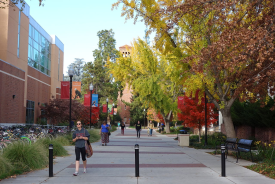It has been no secret among physicists that the sun is spinning. Then they discovered that it is spinning slowly than what they first thought of. This led to further questions what causes the slowdown. Recently, however, a team of astronomers from the University of Hawaii had a crazy hypothesis why the sun is spinning too slowly.
Scientists have known for a long time that the sun is spinning but in a surprising way. Its interior surrounded by an ultra-hot, bubbling mess, spins in the same way. The 500-kilometer outermost region which radiates the light spins more smoothly. However, the tiny 70-kilometer outer region spins slower than the interior.
This phenomenon is what surprises the scientists because they've believed that the atmosphere in that region should be the most stable. Thus, they wonder why a stable region would slow down.
This led them to develop a hypothesis which is similar to how a water sprinkler works. They theorized that if the sun is spinning, then it could be emitting light particles at a certain angle. Those light particles then produce a rotational force called torque which explains why the sun is spinning too slowly.
In order to give weight to their hypothesis, the scientists made detailed measurements of the slowdown using NASA's Solar Dynamics Observatory satellite. They observed the edges of the solar images to calculate the rotation speed of the sun. They also observed the how the acoustic waves produced by the sun bounce from the core to the surface.
Jeff Kuhn, one of the astronomers behind the hypothesis, said that their theory might be considered quite controversial and he was right as other scientists expressed their opinions about the hypothesis.
Michael Hahn, associate research scientist in astronomy from Columbia University said the theory has a speculative nature and the observations are strong. He also expressed his doubts about the explanation of the slowdown saying that the viscosity of the gases needs to be considered.
The study was published in the journal Physical Review Letters.
© 2025 University Herald, All rights reserved. Do not reproduce without permission.








